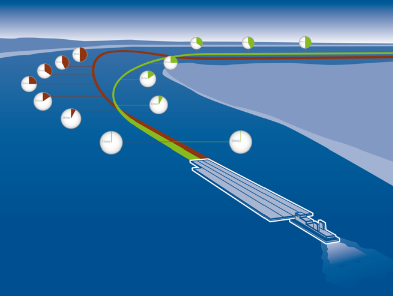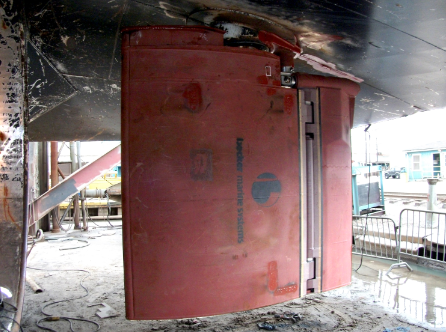 |
 |
Improving performance has always been an important issue for vessel/boat operators. When looking at the traditional rudder systems employed on towboats, it can be seen that they have been left more or less unchanged for decades. Very high or maximum rudder angles are typically required to maneuver tows around the bends of river systems in the United States.
The reason for this is the hydrodynamic shape with a stall point occurring even at low rudder angles. This mode of operation results in drawbacks such as blocked outflow from Kort nozzles, drift towards the opposite bank and a rapid decrease in speed. Once passing the bends, the tow has to be accelerated again, consuming an enormous quantity of fuel bend after bend.
Becker Marine Systems, the market and technology leader in the field of high lift flap rudder systems, offers a very interesting and economical upgrade solution for precisely this problem. Operators such as Ingram Barge Company, Marquette Transportation, AEP and others have confirmed significant improvement in maneuverability performance at a greatly reduced rudder angle with little to no drift. Rudder angles above 25 degrees are rarely required. At these low rudder angles outflow is not blocked as much as before. Consequently, the tow does not slow down as much, which is also observable for the propulsion equipment with the engines only slowing approx. 5-8 rpms and recovering much more quickly.
With this increase in speed more trips can be made over time. This effect is also enhanced by the fact that the Becker rudders are lower in height compared to the standard arrangement, resulting in a lower risk of rudder groundings, where bending of rudder stocks can also be observed. The principle difference in behavior is shown in picture No. 1.
A 70 percent improvement in maneuverability performance can typically be expected. This is possible due to the flap arrangement, providing a flap angle of 90 degrees at a 45 degree rudder angle, an excellent hydrodynamic shape and a pre-balance of about 45 percent. The flap rudder principle was invented in the early 1950s by the company’s founder, Willy Becker, a Rhine River captain with a fleet of tankers. Since that time several hundred Becker Flap rudders have been delivered to towboat operators plying European inland waterways. Including ocean-going vessels, a total of approximately 8,000 rudders, many also with ice class, have been delivered to the marine industry. Because it is known that better is the enemy of good, steady improvements such as shape optimization by means of state-of-the-art CFD analysis have been made to create the Becker Rudder of today.
